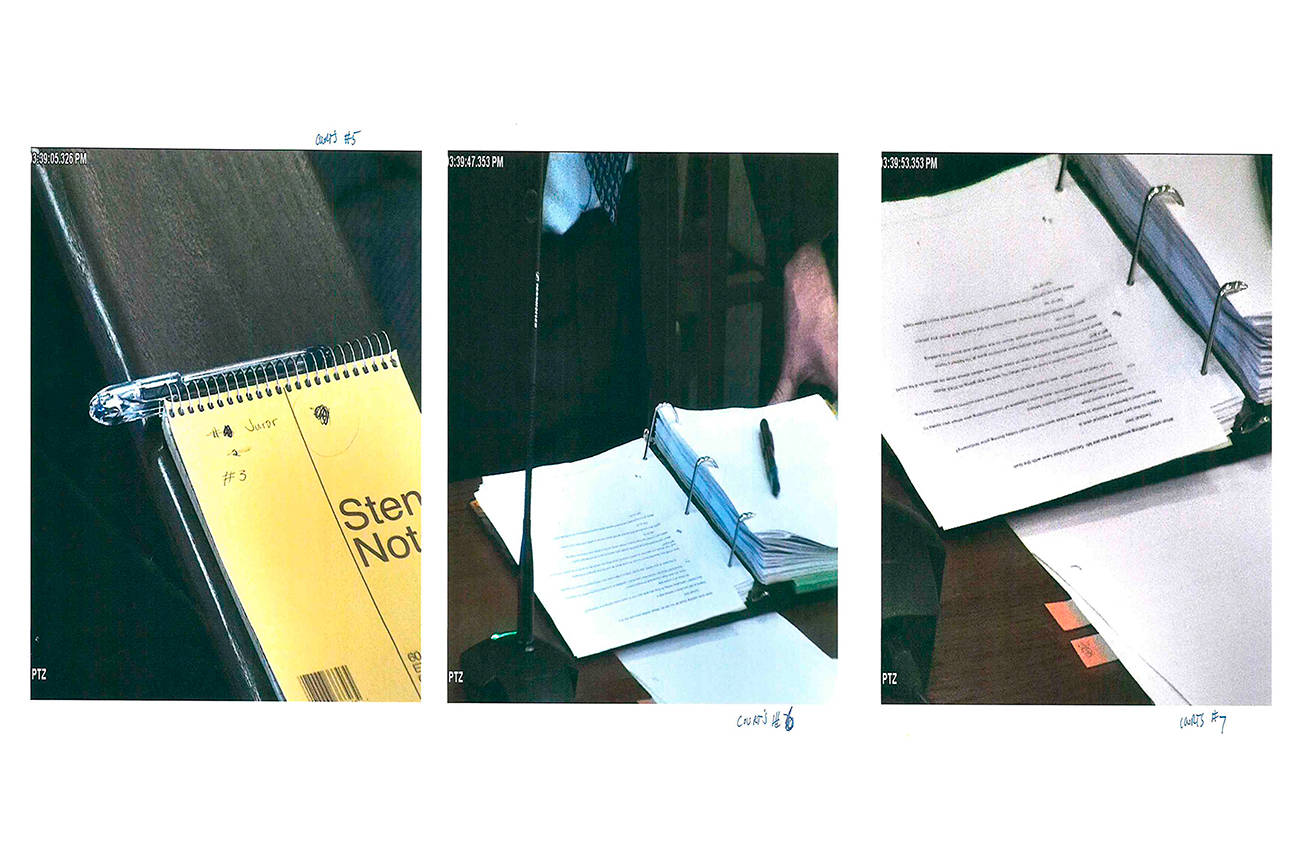Security camera footage that resulted in a case dismissal will be released as public record.
Judge Donald Eaton announced during a hearing on Feb. 19 that courtroom video of a trial will be unsealed for public release.
Eaton is allowing San Juan County Sheriff Ron Krebs the ability to redact portions that could compromise the security of the courtroom. Krebs has until Feb. 26 to release the redacted video.
“… The court’s decision to grant defendant’s motion to dismiss was based in large part on the fact that the video recording clearly indicated that a state actor intentionally manipulated the security camera in a way that unequivocally evidenced an effort to view defense counsel’s notes, which are protected work product,” Eaton said in his determination.
A criminal case tried in the district court was dismissed on Saturday, Feb. 2, with prejudice (meaning it cannot be retried) due to misconduct by a county employee. Eaton dismissed charges against Dustin Schible, 32, of Lopez Island, for criminal trespass, assault in the fourth degree and harassment. The case was being tried in district court because the charges were misdemeanors and a gross misdemeanor.
During the criminal trial on Jan. 31, a court security camera zoomed in on various locations around the room, including on a closed jury notebook, a prosecution exhibit, the prosecutor and the defense’s paperwork.
Eaton said that sealing the recording would impede the public’s constitutional right to “observe the administration of justice openly and fully” (Washington state constitutional right Article 1, Section 10).
Per court documents, Krebs argued that the video needed to be sealed to protect the method of security in the district court by revealing the camera’s blind spots. Eaton said that Krebs “misunderstands” the court’s ruling because the case wasn’t dismissed because of what the camera zoomed in on, but rather that it zoomed in at all.
“… the other factor being the absence of any credible explanations for who exactly moved the camera and why it was moved,” Eaton said. “…Unless the public has an opportunity to view at least the proportions of the video recording that include the clearly deliberate movements of the camera, and to consider those movements in light of the testimony given by [Krebs] … the public cannot reasonably be expected to have a full understanding of the basis for the court’s dismissal of the charges. …”
On Jan. 31, Superior Court Administrator Jane Severin was watching live footage of the case on her computer and noticed the zooming action. She then told Superior Court Judge Kathryn Loring and then Eaton was alerted, according to San Juan County Prosecuting Attorney Randy Gaylord. Gaylord was serving as prosecutor for the state in the case.
According to Krebs, the courtroom was expected to be high tension given the defendant’s previous alleged threats of violence, and he was asked by Gaylord to provide extra security to the courthouse for that reason. Due to staffing restrictions, Krebs said he was unable to have a deputy at the courthouse and resorted to checking on the security camera, instead.
The camera was being operated by someone in the San Juan County Sheriff’s Office or the information technology department at the time of the incident, according to Gaylord.
Unfamiliar with the way the system operates, Krebs said he double-clicked on the live camera stream to make it full screen and inadvertently zoomed in. The video feed is in the dispatch office. He said it was only on the documents for five to 10 seconds, and nothing was legible.



